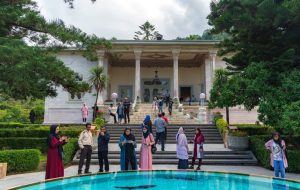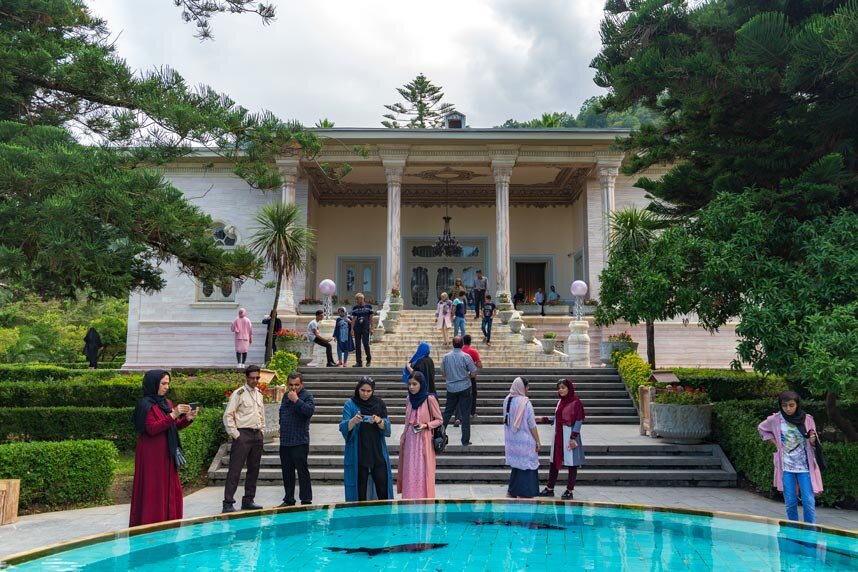Marmar Palace: Ramsar’s must-visit treasure along the Caspian coast
TEHRAN – Marmar Palace, also known as the Royal Palace, stands as one of the most captivating historical sites in Ramsar, a coastal town in Iran’s Mazandaran province. Every day, Ramsar attracts hundreds of visitors with its lush forests, picturesque landscapes, and Caspian Sea shores, and Marmar Palace has become one of the essential highlights


TEHRAN – Marmar Palace, also known as the Royal Palace, stands as one of the most captivating historical sites in Ramsar, a coastal town in Iran’s Mazandaran province.
Every day, Ramsar attracts hundreds of visitors with its lush forests, picturesque landscapes, and Caspian Sea shores, and Marmar Palace has become one of the essential highlights of any trip to the region.
Situated on Rajaei Street, this architectural marvel is a short eight-minute drive from Ramsar’s historic hotel and only ten minutes from the scenic Caspian coast.
Constructed in 1937 (1316 in the Iranian calendar) under the reign of Reza Shah Pahlavi, Marmar Palace combines elements of Iranian and European architecture.
After its initial construction, the palace was later incorporated into the properties of Reza Shah’s son, Mohammad Reza Pahlavi, and served as a seasonal residence for the royal family until the 1979 Islamic Revolution. Following the revolution, the palace was transferred to the Mostazafan Foundation and has since been opened to the public as a museum.
Spanning an area of 6000 square meters, the palace grounds include an exquisite botanical garden, renowned for its diverse collection of plants that draw in nature lovers and botanists alike. However, the architectural elegance of the 600-square-meter mansion itself is the primary attraction.
As the name suggests, Marmar (meaning “marble” in Persian) Palace features an exterior crafted from pristine marble, including a spacious front porch, a fountain, and gracefully carved marble columns. The serene pool in front of the mansion mirrors these marble pillars, enhancing the beauty of the structure, with colorful fish swimming just beneath the surface, adding an idyllic charm.
Inside, the palace reveals a grand central hall with expansive rooms on both its eastern and western wings, each filled with meticulously preserved furnishings from the Pahlavi era. The chandeliers, ornate candlesticks, antique desks, and decorative artifacts offer a fascinating glimpse into the royal family’s lifestyle.
Visitors are often struck by the intricate stucco ceiling designs and a stately fireplace that anchors the room with elegance. The walls are adorned with paintings, each a priceless work of art carefully curated and collected by the Pahlavi family.
On the southern side of the palace, visitors will find another entrance, flanked by two life-sized marble statues of Mazandaran tigers, a species that has unfortunately disappeared from Iran’s natural landscapes. These statues pay tribute to a once-thriving symbol of Iran’s wildlife heritage.
Marmar Palace and its surrounding garden have been officially registered on Iran’s National Heritage list, preserving its legacy and ensuring its place as a treasured cultural landmark. Today, the property remains an emblem of the grandeur of Iran’s royal past, providing visitors with a memorable journey through both natural beauty and historical significance.
One of the most scenic spots on the Caspian coast, Ramsar is where the jungle-clad lower ridges of the snow-topped Alborz tumble into the sea.
AM
